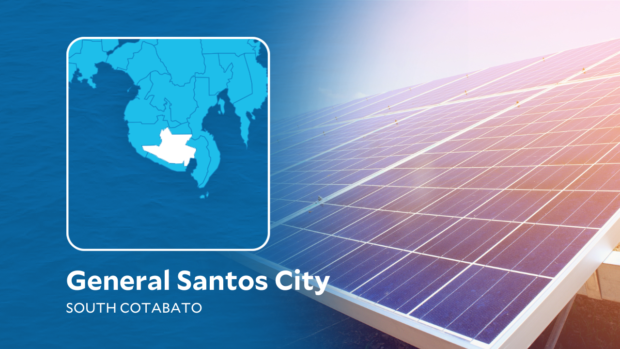
GENERAL SANTOS CITY — A foreign-backed local company in this city is putting up a 150-megawatt (MW) agro voltaic solar farm, or a farm whose area is used both for solar photovoltaic (PV) harvesting and agriculture at the same time.
Yan Amante, president and chief executive officer of Embrace Nature Power 1 Corporation (ENPC-1), said they planned to start the construction of a solar farm in a 120-hectare property spanning portions of Barangays Conel and Mabuhay, where they would also plant some crops.
She said the company invested around $285 million (around P16 billion) into the project, touted as a “pioneering” renewable energy project in the country, targeted to break ground in the third week of January 2023.
“We will be employing 1,500 workers for the construction phase, which will be completed in 12 months,” Amante said Tuesday in her presentation to the city council.
ENPC-1, based in Purok Guadalupe in Barangay Conel, is 60 percent owned by a local company and 40 percent owned by an undisclosed United States-based funder, she said.
The project area covers a total of 61 hectares in Barangay Conel and 59 hectares in Barangay Mabuhay, which formed part of a Forest Land Grazing Management Agreement held by the family of Grace Leyson Beronio.
The company has partnered with a Croatian energy firm for the adoption of the agrovoltaics technology for the project, which she said would be among the first of its kind in the country.
Amante said agrovoltaics would be primarily a combination of energy and agricultural activity. The solar panels would be installed at least two to three meters above the ground, where various crops were grown.
Amante said the company initially planned to plant upland rice and ginger in the Conel-Mabuhay project. Later, they planned to develop a green tea plantation on the ground that would host over 200,000 solar panels.
“The project adopts a symbiotic design unlike the traditional solar farms wherein the ground remains unused and barren,” Amante said.
It will help mitigate the impact of climate change and prevent flash floods, landslides, and erosion, she added.
Once operational, the solar power plant would be a cheaper alternative to local electric cooperatives as its generation charge could reach only P5.90 per kilowatt-hour (kwh), she said.
That would translate to an actual power rate of P8 to P9 per kwh, which would be below the average P10 to P11 rate here charged by South Cotabato 2 Electric Cooperative (Socoteco 2), she said.
It will also benefit other areas in the country as the solar power plant will be connected to the Mindanao power grid through the Mabuhay-Klinan substation of the National Grid Corporation of the Philippines (NGCP).
For the city, Amante said it could earn around P225 million annually in income and corporate taxes in the eighth year of the company’s operations or after the seven-year government tax holiday for renewable energy projects.
The plant will also hire 50 local workers for its operations and more workers–possibly including able senior citizens–for its agriculture projects.
“It can also be promoted for tourism since it is considered a pioneering project in the Philippines,” she said.
Vice Mayor Rosalita Nuñez expressed full support for the project, which she described as “very unique.”
“We’re very happy seeing this project come into fruition,” Nuñez said, adding the city council would easily pass a resolution interposing no objection to it.
Records from the Department of Energy showed that ENPC-1 submitted the required permitting documents for the solar power project in March 2018. In September, the company conducted public consultations with residents and other stakeholders.